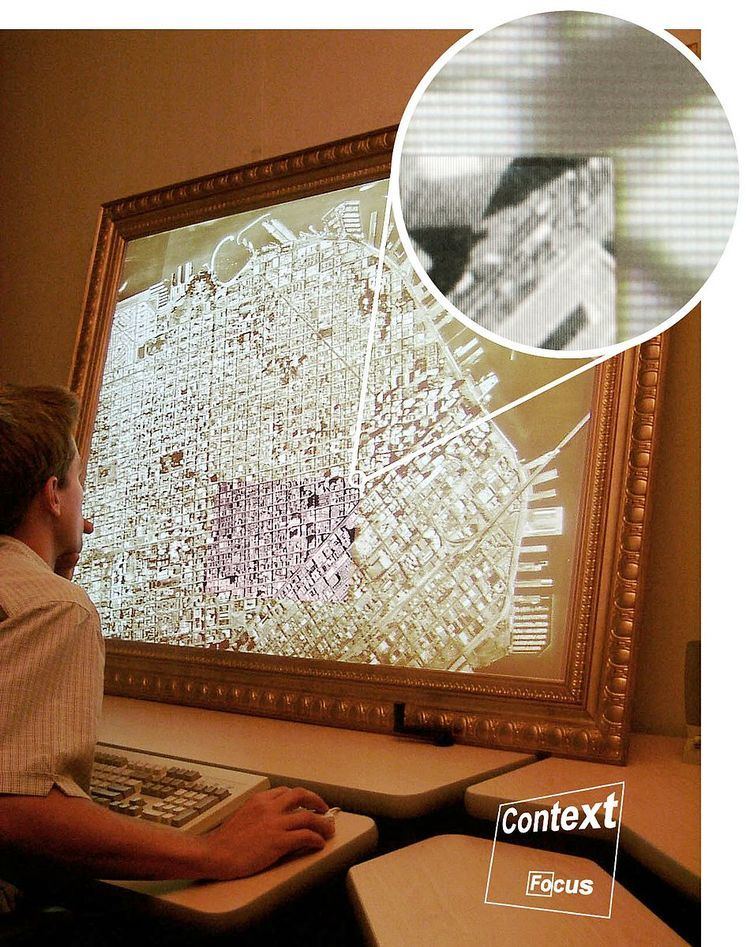 | ||
A focus-plus-context screen is a specialized type of display device that consists of one or more high-resolution "focus" displays embedded into a larger low-resolution "context" display. Image content is displayed across all display regions, such that the scaling of the image is preserved, while its resolution varies across the display regions.
Contents
The original focus-plus-context screen prototype consisted of an 18"/45 cm LCD screen embedded in a 5'/150 cm front-projected screen. Alternative designs have been proposed that achieve the mixed-resolution effect by combining two or more projectors with different focal lengths
While the high-resolution area of the original prototype was located at a fixed location, follow-up projects have obtained a movable focus area by using a Tablet PC.
Patrick Baudisch is the inventor of focus-plus-context screens (2000, while at Xerox PARC)
